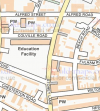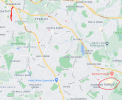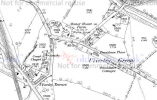Bob Davis
Bob Davis
I have just looked up a relative on the 1851 census and the entry shows them living in the parish of Kings Norton, the village of Sparkbrook in what looks like Honey Lane. Did such a lane exist or have I translated the name incorrectly? Interestingly the father died four years later and they were living in Cregoe Street and he was buried at St Thomas. I don't know what he was doing there as in the census, he was an agricultural labourer.
Bob
Bob





